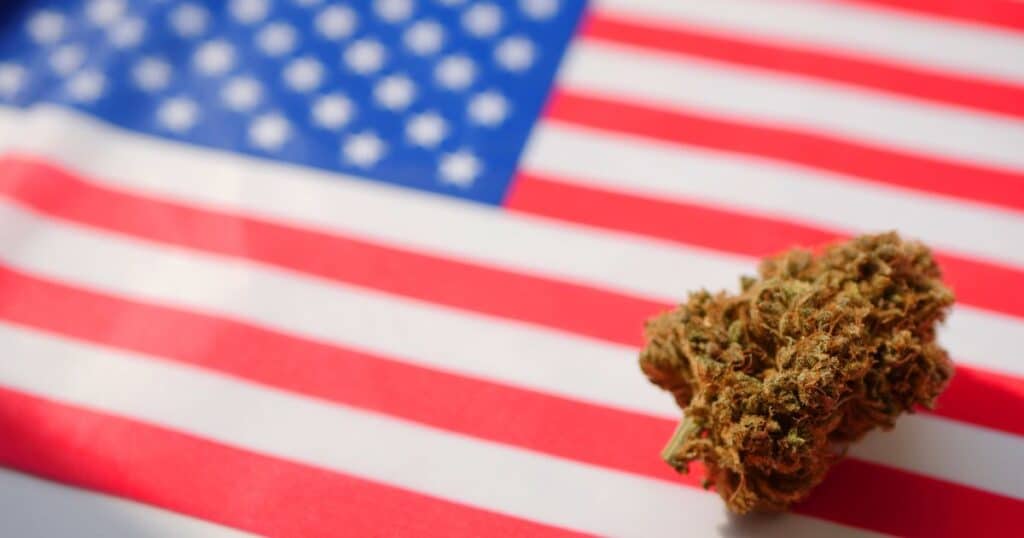The conversation around cannabis legalization in America has evolved, moving beyond underground discussions and secretive medical consultations due to changing attitudes and legislative changes.
It has evolved into a widespread and lively national conversation, sparking significant changes in laws and public perception. But what is driving this normalization, and what does it mean for the future of this controversial plant?
A Historical Shift in Public Opinion
Decades of campaigns, public advocacy, and medical research have led to a sea change in how Americans view cannabis. What was once considered a menace by policymakers and a taboo by society at large is now increasingly seen as a source of economic possibilities and health improvements.
In a January 2024 Pew Research Center survey, approximately nine out of ten respondents advocated for some form of cannabis legalization. The data painted a clear trend line, demonstrating sustained and pronounced support for both medical (88%) and recreational (57%) use. The remaining 11% clinging to prohibition are starkly contrasted by a younger, more liberal demographic who have fervently backed the push for widespread legalization.
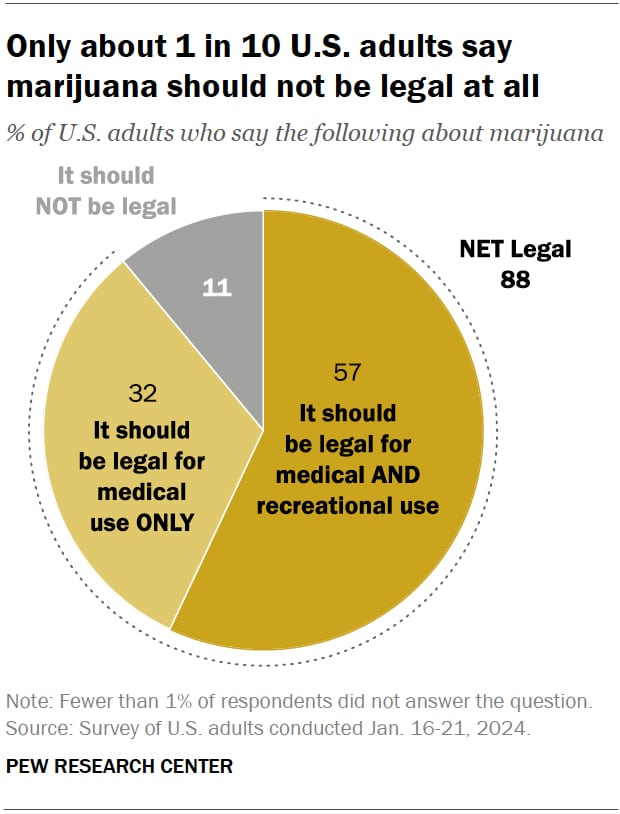
Generational Divide and Political Leanings
Notably, demographic disparity shapes the legalization landscape. Older Americans and conservatives exhibit the lowest support levels for full cannabis access, highlighting the generational and ideological rifts.
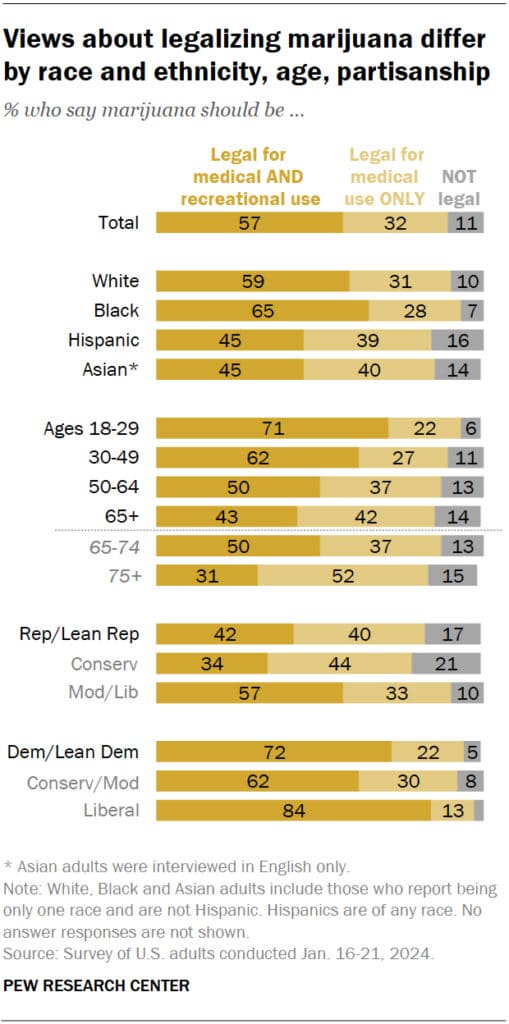
Meanwhile, Hispanic and Asian communities express tepid support compared to their Black and White counterparts. The divide serves as a poignant reflection of differing cultural influences and experiences with drug policy.
An Economic and Justice Prism
Advocates for legalization highlight its potential economic benefits and contributions to social justice. A majority of adult Americans see the legalization of recreational cannabis as potentially beneficial for local economies, though opinions on its overall impact are diverse.
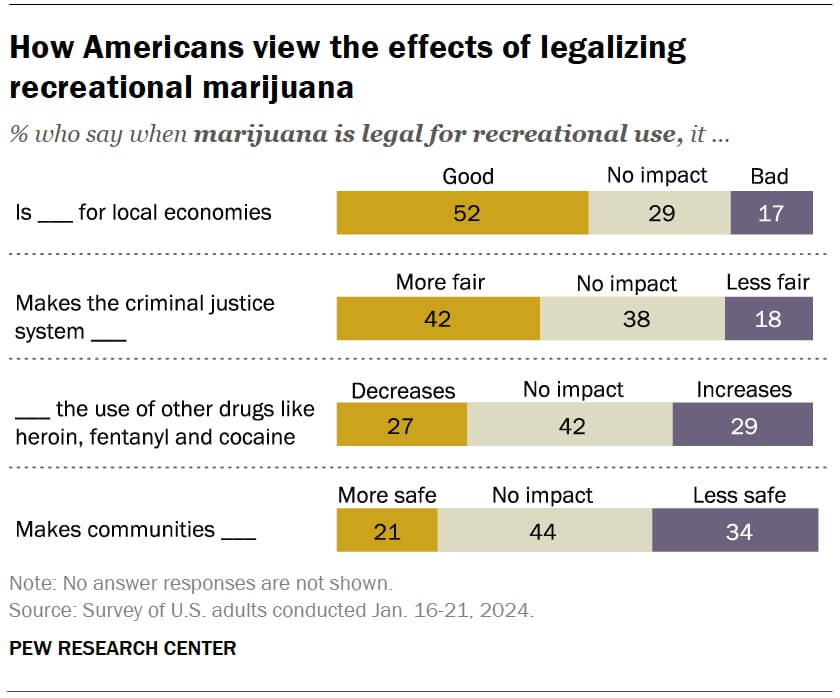
The issue intersects with views on the criminal justice system, community safety, and concerns about gateway drug use. Democrats and younger people are generally more positive about the potential for marijuana policies to address issues within the criminal justice system and enhance community safety.
The ‘Green Wave’ of Marijuana Legislation
With more than half the states enacting laws to allow marijuana in some form, the legal landscape is as diverse as it is fluid. From small, clandestine operations to giant, sign-lit establishments, dispensaries across the nation are opening their doors, serving the 79% of Americans who live in a county with at least one.
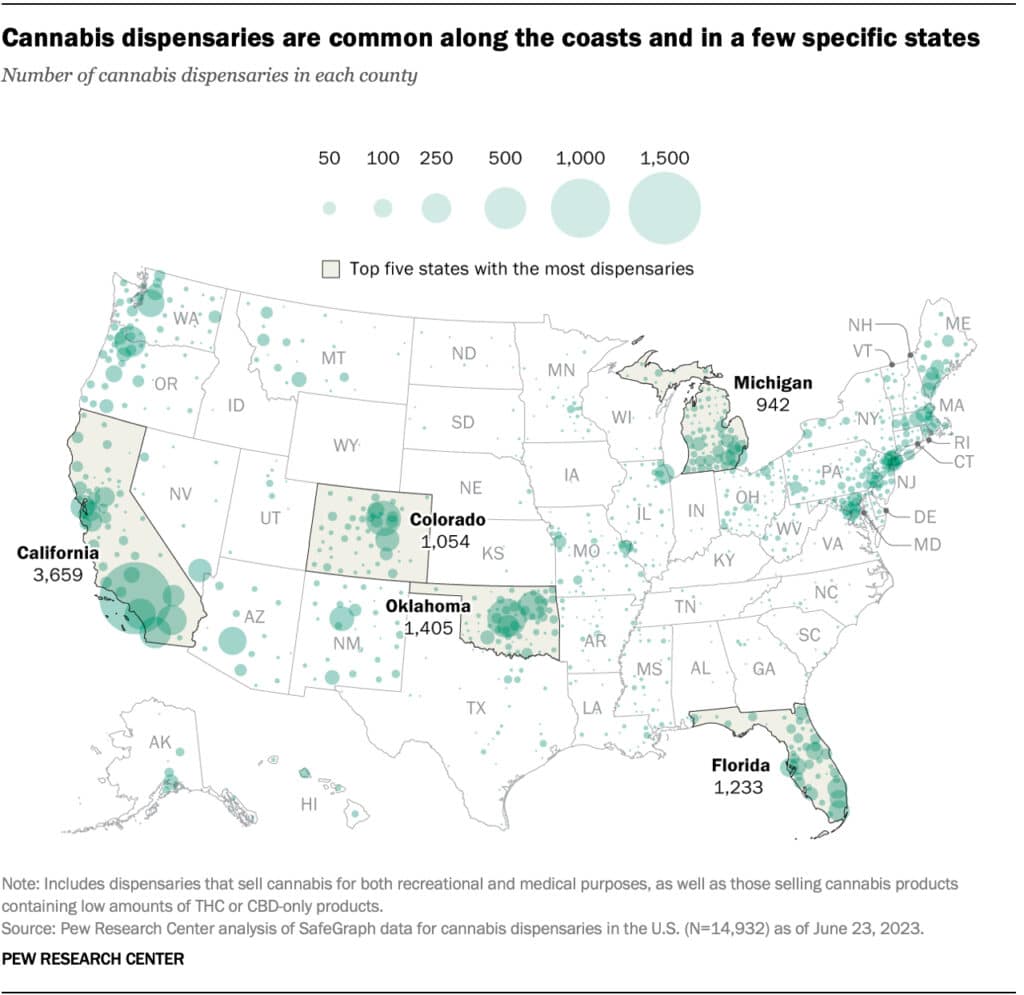
State of Cannabis Legislation
Laws regarding marijuana legalization are in a state of rapid evolution. Twenty-four states and the District of Columbia have green-lit cannabis for both medical and recreational use.
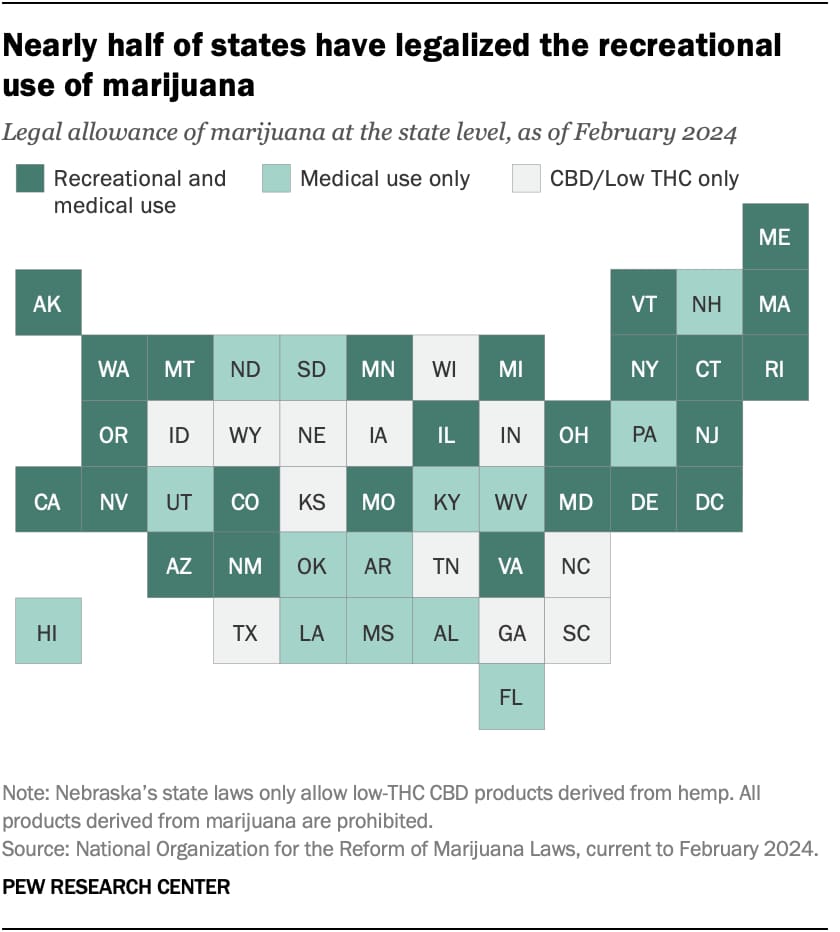
An additional 14 states have passed medical marijuana legislation, making the grand total reach 38 jurisdictions where cannabis is accessible in some form. The push to legitimize has also affected territories, with support networks extending to the U.S. Virgin Islands, Guam, and the Northern Mariana Islands.
The Road Ahead: A Look at the Uncharted Territory
What started as an effort to offer comfort to the sick has grown into a deeper investigation of the plant’s medicinal qualities. Cannabis is recognized for its potential in treating chronic pain, easing mental health conditions, and addressing different physical issues.
However, the growing medical marijuana sector faces challenges in achieving standardization. There is a need for thorough, peer-reviewed research to establish its place in contemporary medicine.
The trend of relaxing marijuana laws has made a broad impact, affecting public opinion, daily life, and legal standards.
Now, over half of the country lives in states with some form of cannabis legalization, leading to noticeable changes in areas like housing, employment, criminal justice, and personal freedoms. Yet, the effects vary widely, resulting in a complex mosaic of laws and outcomes.
The increasing acceptance of cannabis in America reflects both changes in law and shifts in cultural attitudes. This story is shaped by a mix of individual freedoms and varied state and federal regulations.
The trajectory of cannabis in the U.S. involves both potential benefits and risks, offering opportunities as well as facing obstacles. Enthusiasts, policymakers, and the public in America are all playing a part in shaping its future through legislation, votes, and discussions.



